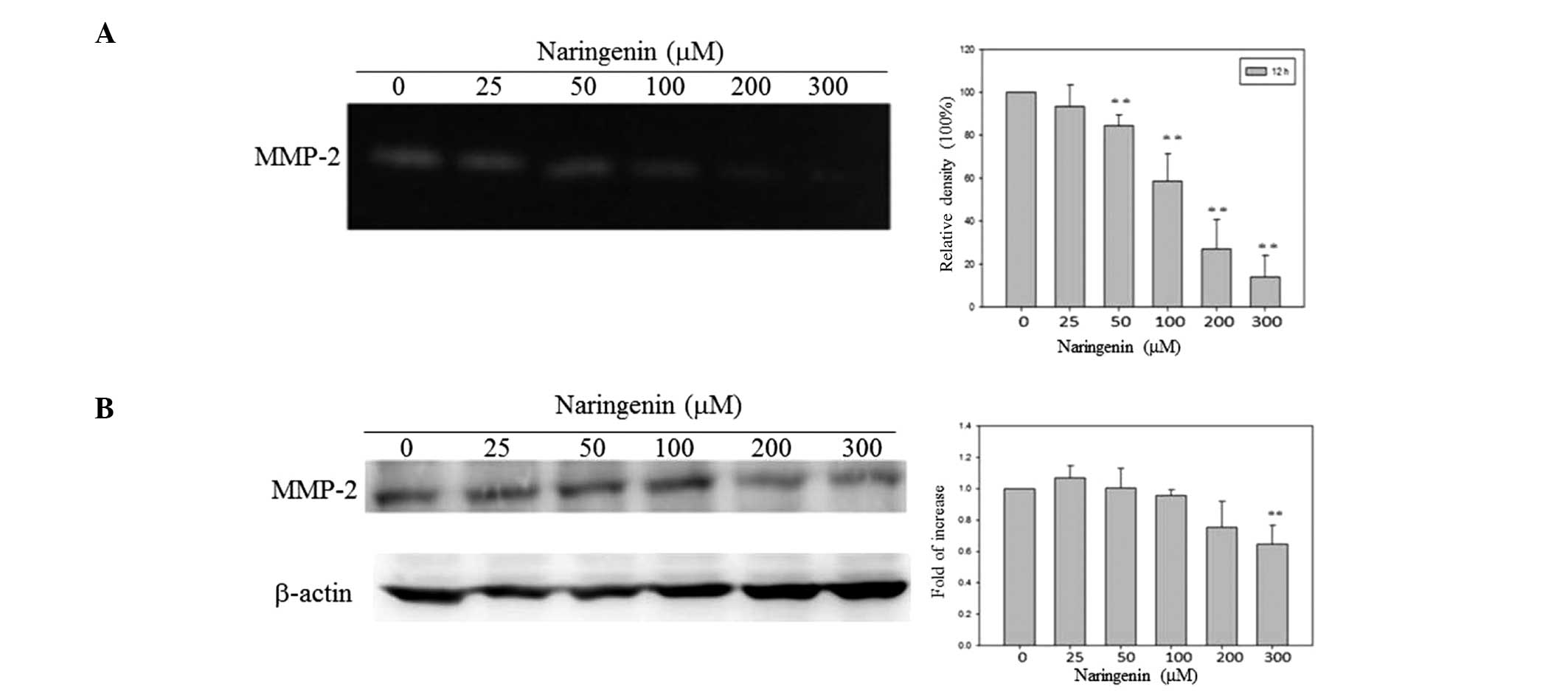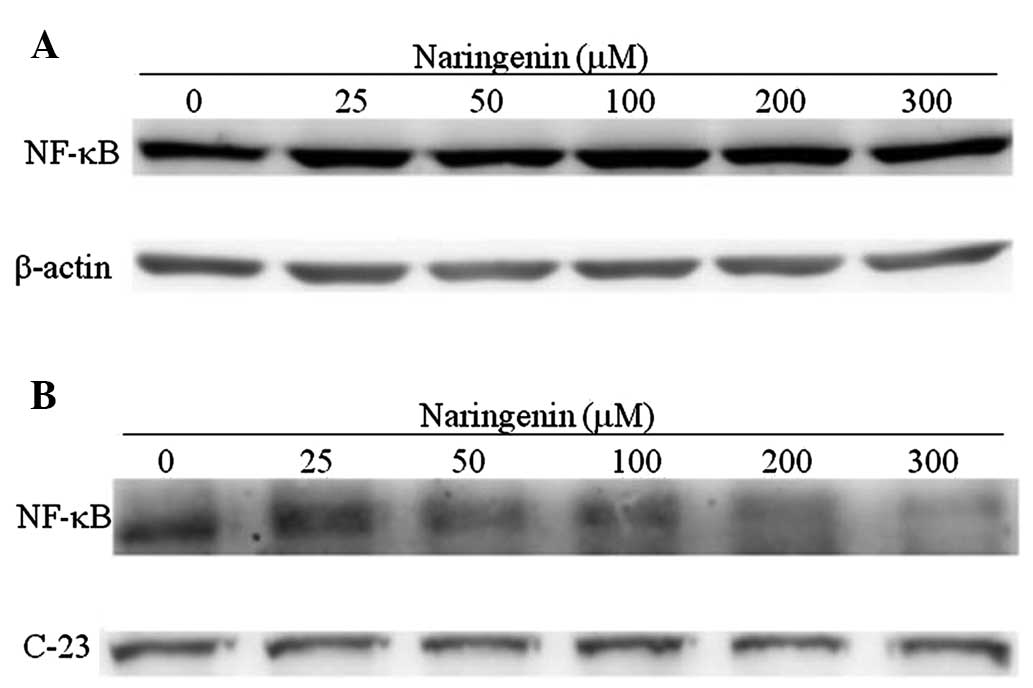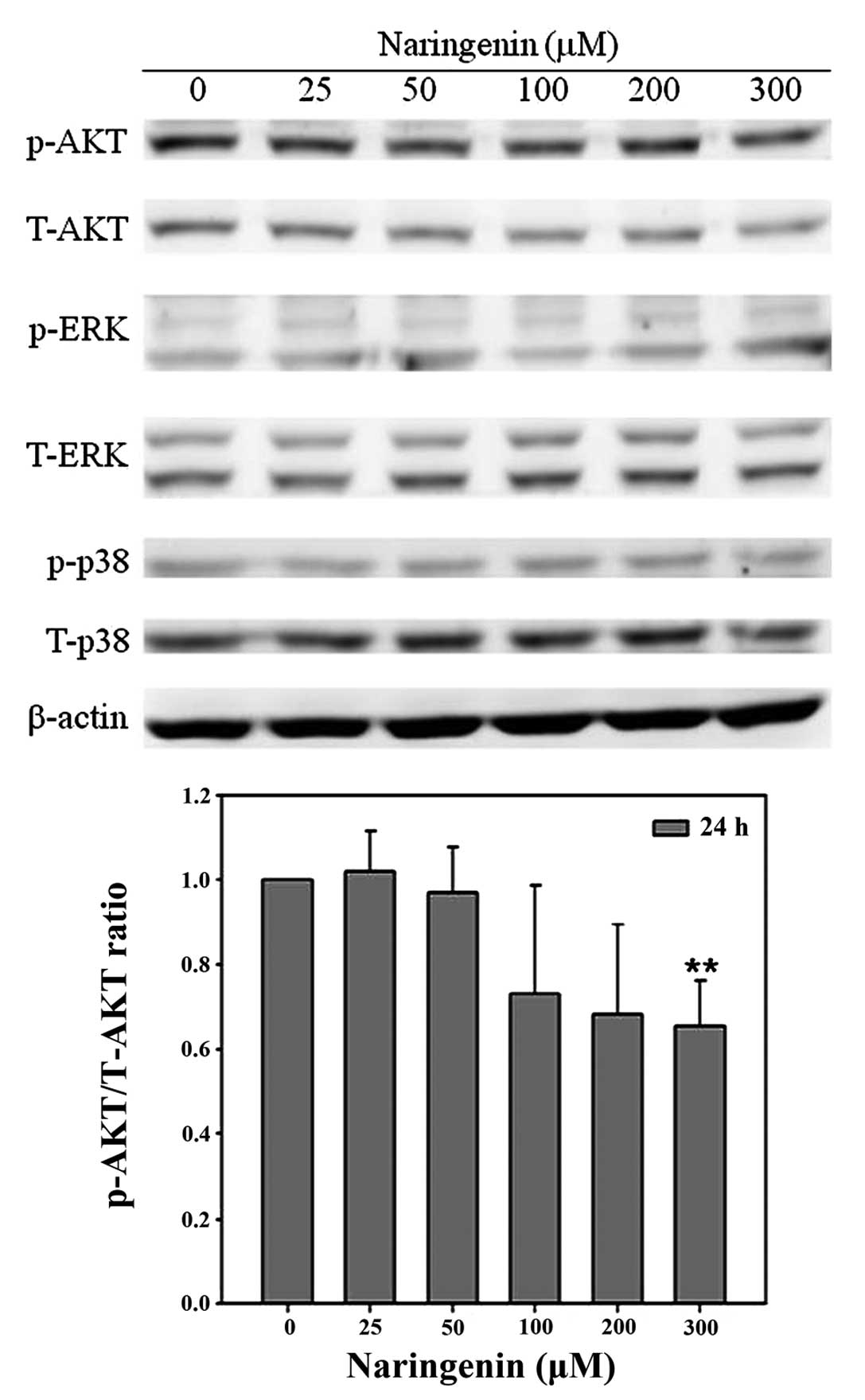|
1
|
Tian B, Wang Z, Zhao Y, et al: Effects of
curcumin on bladder cancer cells and development of urothelial
tumors in a rat bladder carcinogenesis model. Cancer Lett.
264:299–308. 2008. View Article : Google Scholar : PubMed/NCBI
|
|
2
|
Sun F, Zheng XY, Ye J, Wu TT, Wang JI and
Chen W: Potential anticancer activity of myricetin in human T24
bladder cancer cells both in vitro and in vivo. Nutr Cancer.
64:599–606. 2012. View Article : Google Scholar : PubMed/NCBI
|
|
3
|
Zhang L, Chen W and Li X: A novel
anticancer effect of butein: inhibition of invasion through the
ERK1/2 and NF-kappaB signaling pathways in bladder cancer cells.
FEBS Lett. 582:1821–1828. 2008. View Article : Google Scholar : PubMed/NCBI
|
|
4
|
Chen NG, Lu CC, Lin YH, et al: Proteomic
approaches to study epigallocatechin gallate-provoked apoptosis of
TSGH-8301 human urinary bladder carcinoma cells: roles of AKT and
heat shock protein 27-modulated intrinsic apoptotic pathways. Oncol
Rep. 26:939–947. 2011.
|
|
5
|
Qin J, Wang Y, Bai Y, et al:
Epigallocatechin-3-gallate inhibits bladder cancer cell invasion
via suppression of NF-κB mediated matrix metalloproteinase-9
expression. Mol Med Rep. 6:1040–1044. 2012.PubMed/NCBI
|
|
6
|
Frydoonfar HR, McGrath DR and Spigelman
AD: The variable effect on proliferation of a colon cancer cell
line by the citrus fruit flavonoid Naringenin. Colorectal Dis.
5:149–152. 2003. View Article : Google Scholar : PubMed/NCBI
|
|
7
|
Lentini A, Forni C, Provenzano B and
Beninati S: Enhancement of transglutaminase activity and polyamine
depletion in B16-F10 melanoma cells by flavonoids naringenin and
hesperitin correlate to reduction of the in vivo metastatic
potential. Amino Acids. 32:95–100. 2007. View Article : Google Scholar
|
|
8
|
Subramanian P and Arul D: Attenuation of
NDEA-induced hepatocarcinogenesis by naringenin in rats. Cell
Biochem Funct. 31:511–517. 2013. View
Article : Google Scholar : PubMed/NCBI
|
|
9
|
Chen S, Ding Y, Tao W, Zhang W, Liang T
and Liu C: Naringenin inhibits TNF-α induced VSMC proliferation and
migration via induction of HO-1. Food Chem Toxicol. 50:3025–3031.
2012.
|
|
10
|
Lou C, Zhang F, Yang M, et al: Naringenin
decreases invasiveness and metastasis by inhibiting TGF-β-induced
epithelial to mesenchymal transition in pancreatic cancer cells.
PLoS One. 7:e509562012.PubMed/NCBI
|
|
11
|
Kim JJ: Recent advances in treatment of
advanced urothelial carcinoma. Curr Urol Rep. 13:147–152. 2012.
View Article : Google Scholar : PubMed/NCBI
|
|
12
|
Min C, Eddy SF, Sherr DH and Sonenshein
GE: NF-kappaB and epithelial to mesenchymal transition of cancer. J
Cell Biochem. 104:733–744. 2008. View Article : Google Scholar : PubMed/NCBI
|
|
13
|
Klein T and Bischoff R: Physiology and
pathophysiology of matrix metalloproteases. Amino Acids.
41:271–290. 2011. View Article : Google Scholar : PubMed/NCBI
|
|
14
|
Gialeli C, Theocharis AD and Karamanos NK:
Roles of matrix metalloproteinases in cancer progression and their
pharmacological targeting. FEBS J. 278:16–27. 2011. View Article : Google Scholar : PubMed/NCBI
|
|
15
|
Kawabata K, Murakami A and Ohigashi H:
Nobiletin, a citrus flavonoid, down-regulates matrix
metalloproteinase-7 (matrilysin) expression in HT-29 human
colorectal cancer cells. Biosci Biotechnol Biochem. 69:307–314.
2005. View Article : Google Scholar : PubMed/NCBI
|
|
16
|
Baek SH, Kim SM, Nam D, et al:
Antimetastatic effect of nobiletin through the down-regulation of
CXC chemokine receptor type 4 and matrix metallopeptidase-9. Pharm
Biol. 50:1210–1218. 2012. View Article : Google Scholar : PubMed/NCBI
|
|
17
|
Luqman S and Pezzuto JM: NFkappaB: a
promising target for natural products in cancer chemoprevention.
Phytother Res. 24:949–963. 2010.PubMed/NCBI
|
|
18
|
Sheng S, Qiao M and Pardee AB: Metastasis
and AKT activation. J Cell Physiol. 218:451–454. 2009. View Article : Google Scholar : PubMed/NCBI
|
|
19
|
Cicenas J: The potential role of Akt
phosphorylation in human cancers. Int J Biol Markers. 23:1–9.
2008.PubMed/NCBI
|
|
20
|
Lee YC, Cheng TH, Lee JS, et al:
Nobiletin, a citrus flavonoid, suppresses invasion and migration
involving FAK/PI3K/Akt and small GTPase signals in human gastric
adenocarcinoma AGS cells. Mol Cell Biochem. 347:103–115. 2011.
View Article : Google Scholar : PubMed/NCBI
|
|
21
|
Chien CS, Shen KH, Huang JS, Ko SC and
Shih YW: Antimetastatic potential of fisetin involves inactivation
of the PI3K/Akt and JNK signaling pathways with downregulation of
MMP-2/9 expressions in prostate cancer PC-3 cells. Mol Cell
Biochem. 333:169–180. 2010. View Article : Google Scholar : PubMed/NCBI
|














